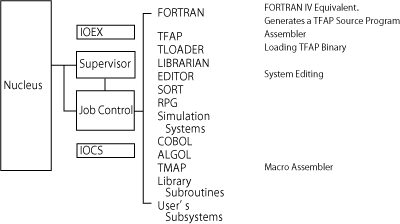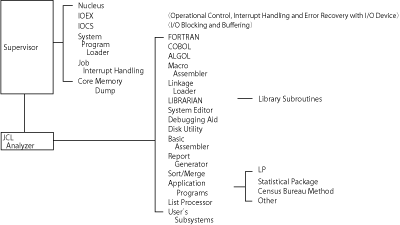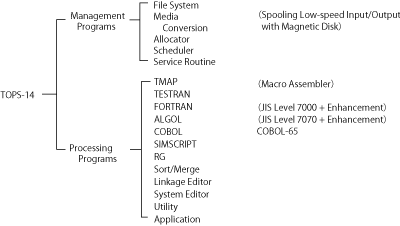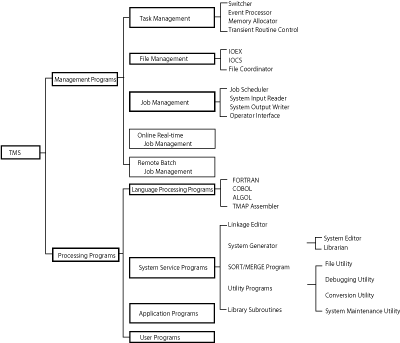"TOPS" was the OS for the TOSBAC-3400 series of general-purpose computers developed by Toshiba, and its primary purpose was scientific and engineering computing. The TOPS series included diverse variations that met system configurations and functional evolutions ranging from TOPS-1, capable of sequential job execution based on a magnetic drum, to TMS, capable of multi-dimensional processing based on a magnetic disk.
- TOPS-1
- This was an OS capable of sequential job execution based on a magnetic drum/paper tape reader in a configuration called "A system" for TOSBAC-3400 models 20 and 30, and was developed through cooperation between Kyoto University and Toshiba in 1964. It was based on the technology for KT-FORTRAN and FORTRAN monitors prototyped in cooperation between both parties prior to TOPS-1. The functions of TOPS-1 were configured as follows.









